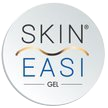November is Cancer Awareness month and the need to talk about it and be aware has never been lesser. Being one of the most prevalent cancers in women, breast cancer deserves to be discussed and spoken about more than just during the awareness month.

Why is awareness important?
Being aware of how prevalent the disease is and how early detection can be key in complete recovery goes a long way in treatment and good survival rates. A heightened awareness unquestionably leads to more screening and early diagnosis. It also leads to more treatment options, better outcomes and less extensive surgery.
What are the risk factors?
Being a woman and getting older is a risk factor in itself. However, there are other factors that puts women at a greater risk. Some factors that can have a significant influence include:
- Personal/family history
- Menstrual cycle history
- Breast density
- Certain changes in breast cancer genes
- Use of birth control pills
- Hormone replacement therapy after menopause
- Being overweight and not physically active
- Drinking alcohol
How can we avoid the common risks?
- Stay at a healthy weight range. Getting physically active and eating healthy balanced food can help keep excess weight at bay.
- Exercise should include at least 2.5 hours of moderate intensity or 1.5 hours of high intensity activities or a combination of both.
- Limit or avoid alcohol intake.
- Evaluate your risks before using birth control pills or hormone replacement therapy.
- Breastfeeding is also said to be factor in prevention of breast cancers.
What symptoms should you look out for?

As women, we know how our breasts look and feel. It is wise to trust the gut instinct when something doesn’t look or feel right.
The following are some of the common symptoms of breast cancer:
- Any changes in the shape of size of the breasts
- Soreness or pain in any area of the breast
- Unusual discharges from the nipple (other than breast milk in lactating mothers)
- A new lump in the breasts or armpits.
- Redness, scaling of the skin on the nipple
- Dimpling or irritation of the breast skin
Why screening?
Breast cancer screening is an informed and shared decision-making between you and your healthcare provider after evaluating the need and understanding the benefits and risks. Although screening does not prevent the cancer itself, it helps in early detection and effective treatment.
Who should get screened?
- Women over 30 should get breast cancer risk assessment done.
- Women with an average risk should get screened at age 40.
- Women with a previous diagnosis of breast cancer should get supplemental screening with MRI. This is especially beneficial if the cancer was diagnosed before age 50.
What are the screening methods used?
Self-examination

It is recommended that all women self-examine their breasts once a month. Forty percent of breast cancers are detected through self-exams after finding a suspicious lump or an unusual change in the appearance of breasts.
It is important to understand how to self-examine yourself. By following recommended steps like examining yourself in front of a mirror and then feeling the breast tissues while standing and lying down, unusual changes in the appearance or any lumps can be felt warranting further tests.
Mammogram
Essentially an x-ray of the breast, mammograms are undoubtedly the best in early detection of breast cancers. This makes it easier to treat before even the cancer is significant enough to feel or cause symptoms. 3D mammograms, a type of digital mammography uses x-ray machines to take pictures of thin slices of the breast from different angles and the pictures are reconstructed using computer software.

Ultrasounds
Ultrasounds are used in combination with mammograms, especially for women who aren’t in a position to undergo MRI scans. It is also a preferred diagnostic tool for women with dense breast tissue. If a suspicious site is detected on a mammogram, ultrasound is ordered to further evaluate if the lump found is a solid mass, a fluid filled cyst or a combination of the two.
Magnetic Resonance Imaging
MRI is used as a diagnostic tool in high-risk women if suspicious areas are found on a mammogram. Although MRI can detect cancers that are sometimes missed on a mammogram, it is also more likely to detect non-cancerous lumps and thus can lead to false positives, warranting further tests or biopsies. For this reason, it is not recommended for women with an average risk for breast cancer.

With awareness, proper risk evaluation, regular screening and early treatment, we can succeed to a great extent in the fight against breast cancer. Early screening and treatment can result in significant decrease in breast cancer related death rate.





